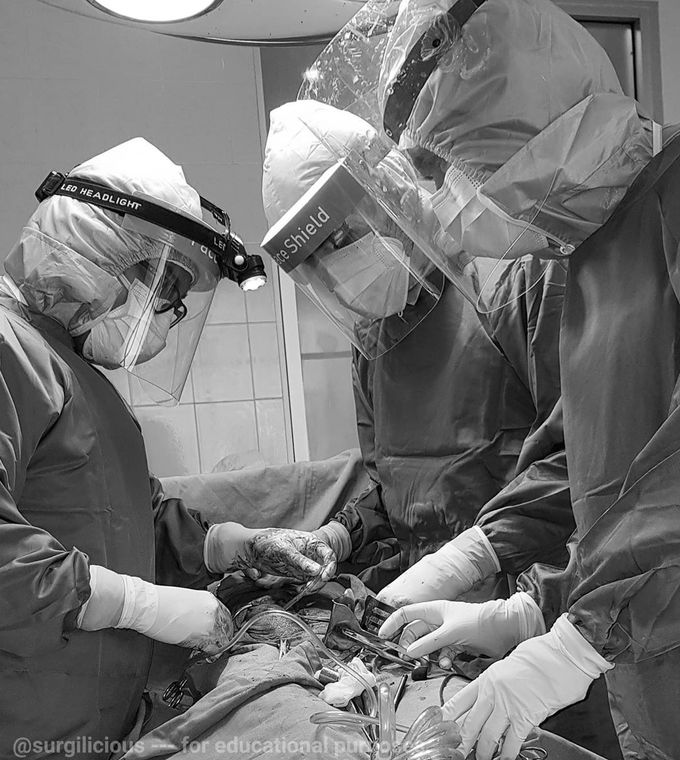


Inserting drain after exploratory laparotomy Drains are designated to evacuate intraperitoneal fluid collections. They can be used for diagnostic, prophylactic, or therapeutic purposes. In upper gastrointestinal surgery, diagnostic drains are mainly placed to assess intraperitoneal fluid collections in order to establish a diagnosis. These drains are seldom left in place and are, therefore, of minor importance. In contrast, prophylactic drains placed at the end of an operation are used frequently with two intentions: first, to prevent fluid accumulations which could be harmful (i.e., pancreatic juice or bile) or to evacuate fluid collections that can become infected and lead to the formation of intra-abdominal abscesses; second, prophylactic drains may be used to detect early postoperative complications, such as intra-abdominal bleeding or anastomotic leakage. The drain orifice through the skin is created by a penetrating cut with a scalpel. A Kelly clamp is inserted into the orifice and penetrates the abdominal wall diagonally. The hand serves as protection to prevent bowel injury. This technique creates a tunnel that helps to seal the abdominal cavity after drain removal. After clamping the drain tip, the Kelly clamp and drain are pulled through the abdominal wall from inside outwards. Others prefer to create the tunnel from inside out and pull the drain into the abdomen. Finally, the drain position is secured by a non-reactive skin suture. #surgeon #surgery #doctor #medicalstudent #blackandwhitephotography #photooftheday

